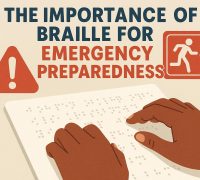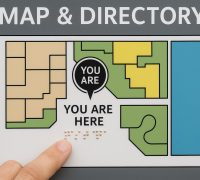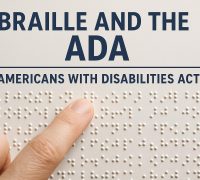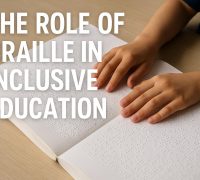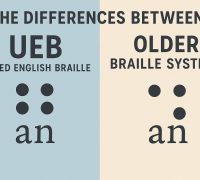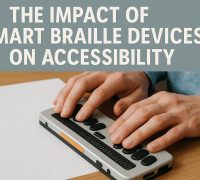The Importance of Braille in Accessing Literature
The significance of Braille in providing access to literature for individuals who are blind or visually impaired cannot be overstated. As a tactile writing system, Braille empowers people to read books and other written materials independently. This independent access fosters a deeper connection to the literary world, enriching the lives of those who use it.
Understanding the Braille System
The Braille system is an intricate arrangement of raised dots organized in cells of up to six or eight configurations. Each cell corresponds to specific letters, numbers, punctuation marks, or even entire words, depending on their configuration and arrangement. Developed by Louis Braille in the 19th century, this ingenious system allows blind individuals to read by touch, thereby transforming the way literature is accessed by the visually impaired.
Learning Braille
Acquiring proficiency in Braille is akin to learning a new language. It necessitates practice, dedication, and patience. Individuals typically start with the basic alphabet and numerals before progressing to more advanced Braille code systems. Mastering Braille opens up vast opportunities for accessing a wide variety of literature and educational materials, making the learning process an invaluable investment in personal and educational development.
Impact on Literacy and Education
For those who are blind, learning Braille is a cornerstone for achieving literacy. It is not merely about being able to read; it’s about having the ability to access textbooks, academic journals, and study materials. This capability empowers students to engage fully in educational settings, allowing them to participate on equal footing with their sighted peers. Through Braille-equipped devices and publications, students can pursue their academic goals without hindrance.
Supporting Lifelong Learning
Beyond the boundaries of formal education, Braille supports lifelong learning by opening doors to a vast array of literary genres. This encompasses novels, poetry, non-fiction, and other works, encouraging individuals to explore and indulge in their personal interests. Libraries specializing in Braille, such as the Perkins Library, offer comprehensive collections of Braille books and materials, fostering an environment of continuous learning and curiosity.
Technological Advancements
Recent technological advancements have significantly broadened the ways in which individuals interact with Braille. For instance, electronic Braille readers and displays provide dynamic methods of accessing digital content, from e-books to online resources. The advent of refreshable Braille displays has further bridged the gap between traditional printed materials and the modern digital landscape.
Enabling Greater Access
The integration of Braille with digital platforms has dramatically increased the availability of literature and information. This ensures that individuals who rely on Braille as their primary means of reading can actively participate in the digital world. They can access up-to-date content and engage with a global community of readers, thus becoming part of a broader cultural conversation.
Conclusion
In conclusion, Braille remains an essential tool for unlocking access to literature and fostering a rich reading experience for those who are blind. Its ability to enable independent reading transforms lives by providing access to knowledge and culture. As Braille continues to evolve and integrate with emerging technologies, the possibilities for expanding the horizons of readers only grows richer. This holds the promise of opening new pathways to learning and cultural engagement, ensuring that the world of literature remains inclusive and accessible to all.
Ultimately, the continued support and innovation in Braille technology are paramount to maintaining its relevance and effectiveness in the modern world. Advocating for Braille literacy and ensuring that educational institutions have adequate resources not only empowers individuals but also enriches society by acknowledging the diverse ways in which people interact with and contribute to the world of literature.
The future of Braille is promising, with the potential to further break down barriers and make literature accessible to an even larger audience. As we move forward, the commitment to preserving and advancing this vital literacy tool will play a crucial role in shaping an inclusive literary culture.


